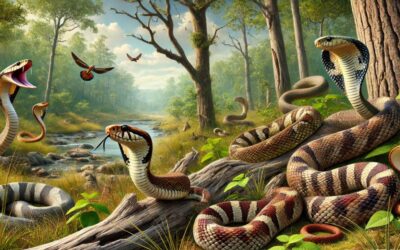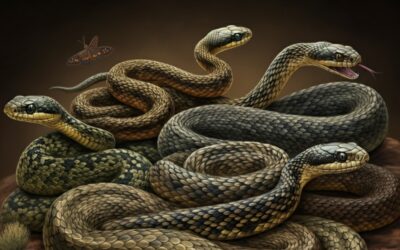A Comprehensive Guide to California’s Hummingbird Species

Introduction
Overview of California’s Hummingbird Species

Overview of California’s Hummingbird Species


Habitats and Behaviors of Hummingbirds
Habitats and Behaviors of Hummingbirds

Unique Features That Make Them Distinct from Other Birds

Unique Features That Make Them Distinct from Other Birds


How to Attract Hummingbirds to Your Backyard
How to Attract Hummingbirds to Your Backyard

Tips for Going on a Hummingbird-Spotting Adventure in California
Concluding Remarks on the Beauty and Fascination of These Tiny Birds
So next time you find yourself in California, be sure to keep an eye out for these amazing little creatures! With a little patience and luck, you might just catch a glimpse of one of nature’s most beautiful and captivating birds. Happy hummingbird-spotting!
Types of Hummingbirds in California
Allen’s Hummingbird
Allen’s Hummingbird is a species of hummingbird native to the western coast of North America, including areas such as California, Oregon, and Washington. This particular species of hummingbird can be easily identified by its bright green back, white underside, and distinctive rusty-orange patches on its gorget (throat).
Scientific classification of Allen’s Hummingbird:
| Kingdom: | Animalia |
| Phylum: | Chordata |
| Class: | Aves |
| Order: | Apodiformes |
| Family: | Trochilidae |
| Genus: | Selasphorus |
| Species: |
S. sasin
|
Binomial name of Allen’s Hummingbird is: Selasphorus sasin (Lesson, R, 1829)

Allen’s Hummingbird

Allen’s Hummingbird is a species of hummingbird native to the western coast of North America, including areas such as California, Oregon, and Washington. This particular species of hummingbird can be easily identified by its bright green back, white underside, and distinctive rusty-orange patches on its gorget (throat).
Scientific classification of Allen’s Hummingbird:
| Kingdom: | Animalia |
| Phylum: | Chordata |
| Class: | Aves |
| Order: | Apodiformes |
| Family: | Trochilidae |
| Genus: | Selasphorus |
| Species: |
S. sasin
|
Binomial name of Allen’s Hummingbird is: Selasphorus sasin (Lesson, R, 1829)

Anna’s Hummingbird
The Anna’s Hummingbird is one of the most common species of hummingbirds to be found in California, making it an ideal bird for backyard enthusiasts to observe and enjoy. This species of hummingbird is typically drawn to nectar-rich flowers and feeders, as well as yards with plenty of trees and shrubs. With their vibrant colors and acrobatic displays, Anna’s Hummingbirds provide a great source of entertainment for birdwatchers everywhere.
Scientific classification of Allen’s Hummingbird:
| Kingdom: | Animalia |
| Phylum: | Chordata |
| Class: | Aves |
| Order: | Apodiformes |
| Family: | Trochilidae |
| Genus: | Calypte |
| Species: |
C. anna
|
The binomial name of Anna’s hummingbird is: Calypte anna (Lesson, 1829)
Anna’s Hummingbird

The Anna’s Hummingbird is one of the most common species of hummingbirds to be found in California, making it an ideal bird for backyard enthusiasts to observe and enjoy. This species of hummingbird is typically drawn to nectar-rich flowers and feeders, as well as yards with plenty of trees and shrubs. With their vibrant colors and acrobatic displays, Anna’s Hummingbirds provide a great source of entertainment for birdwatchers everywhere.
Scientific classification of Allen’s Hummingbird:
| Kingdom: | Animalia |
| Phylum: | Chordata |
| Class: | Aves |
| Order: | Apodiformes |
| Family: | Trochilidae |
| Genus: | Calypte |
| Species: |
C. anna
|
The binomial name of Anna’s hummingbird is: Calypte anna (Lesson, 1829)
Rufous Hummingbird
Rufous Hummingbirds are one of the most common species of hummingbird to be found in California, often appearing in gardens and backyards throughout the state. This particular species of hummingbird is typically drawn to feeders or nectar-rich flowers, but can also be seen catching insects in midair. Rufous Hummingbirds are considered to be a long-distance migrant, and can often be seen flying south in the winter months.
Scientific classification of Rufous Hummingbird:
| Kingdom: | Animalia |
| Phylum: | Chordata |
| Class: | Aves |
| Order: | Apodiformes |
| Family: | Trochilidae |
| Genus: | Selasphorus |
| Species: |
S. rufus
|
Binomial name of Rufous Hummingbird is: Selasphorus rufus (Gmelin, JF, 1788)

Rufous Hummingbird

Rufous Hummingbirds are one of the most common species of hummingbird to be found in California, often appearing in gardens and backyards throughout the state. This particular species of hummingbird is typically drawn to feeders or nectar-rich flowers, but can also be seen catching insects in midair. Rufous Hummingbirds are considered to be a long-distance migrant, and can often be seen flying south in the winter months.
Scientific classification of Rufous Hummingbird:
| Kingdom: | Animalia |
| Phylum: | Chordata |
| Class: | Aves |
| Order: | Apodiformes |
| Family: | Trochilidae |
| Genus: | Selasphorus |
| Species: |
S. rufus
|
Binomial name of Rufous Hummingbird is: Selasphorus rufus (Gmelin, JF, 1788)


Black-chinned Hummingbird
The Black-chinned Hummingbird is considered to be a species of hummingbird often found in California, typically appearing from May to October. They can often be seen feeding on nectar or flying around backyards and gardens, particularly those with plenty of trees and flowering plants. This species of hummingbird is also considered to be a long-distance migrant, often traveling south in the winter months.
Scientific classification of Rufous Hummingbird:
| Kingdom: | Animalia |
| Phylum: | Chordata |
| Class: | Aves |
| Order: | Apodiformes |
| Family: | Trochilidae |
| Genus: | Archilochus |
| Species: |
A. alexandri
|
Binomial name of Black-chinned Hummingbird is: Archilochus alexandri (Bourcier & Mulsant, 1846)
Black-chinned Hummingbird


The Black-chinned Hummingbird is considered to be a species of hummingbird often found in California, typically appearing from May to October. They can often be seen feeding on nectar or flying around backyards and gardens, particularly those with plenty of trees and flowering plants. This species of hummingbird is also considered to be a long-distance migrant, often traveling south in the winter months.
Scientific classification of Rufous Hummingbird:
| Kingdom: | Animalia |
| Phylum: | Chordata |
| Class: | Aves |
| Order: | Apodiformes |
| Family: | Trochilidae |
| Genus: | Archilochus |
| Species: |
A. alexandri
|
Binomial name of Black-chinned Hummingbird is: Archilochus alexandri (Bourcier & Mulsant, 1846)
Costa’s Hummingbird
The Costa’s Hummingbird is a species of hummingbird often found in California, particularly during the spring and fall migration periods. They can often be seen feeding on nectar-rich flowers or drinking from feeders, as well as flying around backyards and gardens with plenty of trees and plants. This species of hummingbird is also a long-distance migrant, often flying south in the winter months.
Scientific classification of Costa’s Hummingbird:
| Kingdom: | Animalia |
| Phylum: | Chordata |
| Class: | Aves |
| Order: | Apodiformes |
| Family: | Trochilidae |
| Genus: | Calypte |
| Species: |
C. costae
|
Binomial name of Costa’s Hummingbird is: Calypte costae (Bourcier, 1839)


Costa’s Hummingbird


The Costa’s Hummingbird is a species of hummingbird often found in California, particularly during the spring and fall migration periods. They can often be seen feeding on nectar-rich flowers or drinking from feeders, as well as flying around backyards and gardens with plenty of trees and plants. This species of hummingbird is also a long-distance migrant, often flying south in the winter months.
Scientific classification of Costa’s Hummingbird:
| Kingdom: | Animalia |
| Phylum: | Chordata |
| Class: | Aves |
| Order: | Apodiformes |
| Family: | Trochilidae |
| Genus: | Calypte |
| Species: |
C. costae
|
Binomial name of Costa’s Hummingbird is: Calypte costae (Bourcier, 1839)


Calliope Hummingbird
The Calliope Hummingbird is considered to be a rare species of hummingbird often found in California during the summer months. They can often be seen feeding on nectar-rich flowers or drinking from feeders, as well as hovering around backyards and gardens with plenty of trees and plants. This species of hummingbird is also a long-distance migrant, often flying south in the winter months. They are especially popular among birdwatchers due to their beautiful plumage and relatively rare sightings.
Scientific classification of Costa’s Hummingbird:
| Kingdom: | Animalia |
| Phylum: | Chordata |
| Class: | Aves |
| Order: | Apodiformes |
| Family: | Trochilidae |
| Genus: | Selasphorus |
| Species: |
S. calliope
|
Binomial name of Calliope Hummingbird is: Selasphorus calliope (Gould, 1847)
Calliope Hummingbird


The Calliope Hummingbird is considered to be a rare species of hummingbird often found in California during the summer months. They can often be seen feeding on nectar-rich flowers or drinking from feeders, as well as hovering around backyards and gardens with plenty of trees and plants. This species of hummingbird is also a long-distance migrant, often flying south in the winter months. They are especially popular among birdwatchers due to their beautiful plumage and relatively rare sightings.
Scientific classification of Costa’s Hummingbird:
| Kingdom: | Animalia |
| Phylum: | Chordata |
| Class: | Aves |
| Order: | Apodiformes |
| Family: | Trochilidae |
| Genus: | Selasphorus |
| Species: |
S. calliope
|
Binomial name of Calliope Hummingbird is: Selasphorus calliope (Gould, 1847)
Conclusion
With so many species of hummingbirds calling the Golden State their home, there are plenty of opportunities for bird watchers to observe and appreciate these tiny birds. From Allen’s Hummingbirds to Black-chinned Hummingbirds, these unique species of hummingbird provide an incredible source of entertainment and inspiration. So grab your binoculars and take a closer look at the vibrant colors, soaring acrobatics, and thunderous wings as you watch these amazing birds in action!
More From This Category
Snakes in Missouri – A Complete Guide to Identification and Safety
Introduction Missouri is home to a diverse range of snake species, making it a fascinating region for reptile enthusiasts and nature lovers alike. With 49 species and subspecies, snakes in Missouri can be found in forests, wetlands, grasslands, and even urban areas....
Snakes of Utah: A Comprehensive Guide to Harmless and Venomous Species
Utah is a haven for snake enthusiasts, thanks to its rich diversity of snake species that thrive in the state’s varied landscapes. From the arid deserts of the south to the lush forests of the north, these fascinating reptiles play crucial roles in their ecosystems....
Exploring the Hidden Dangers and Beauty of Poisonous Snakes in Wisconsin
Poisonous Snakes in Wisconsin, known for its picturesque landscapes and diverse wildlife, is also home to a fascinating array of snakes, including some venomous species. For outdoor enthusiasts, hikers, and local residents, understanding these creatures is crucial for...



